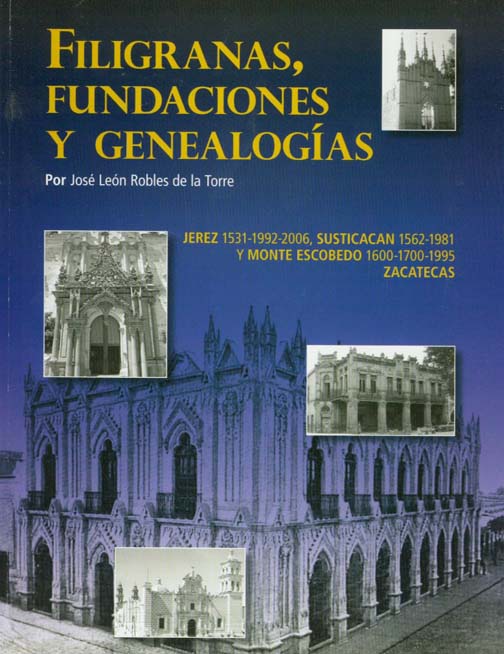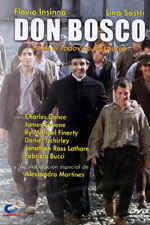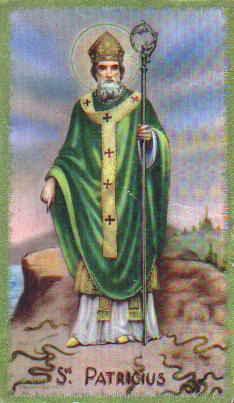|
This is the second part of the Hispanic Medal of Honor series which
consists of the short biography of David Bennes Barkley, the only
Hispanic MoH recipient in World War I plus, the biographies of three
World War II recipients: Lucian Adams, Rudolph B. Davila and Marcario
(Macario) Garcia.
Barkley was the first and only Hispanic Medal of Honor recipient of
World War I. His Hispanic background was discovered in 1989 and thus
he became the first Hispanic-American member of the regular U.S.
Armyto be awarded the medal. I must point out that Joseph H. De
Castro was the first Hispanic-American to be awarded the Medal of
Honor for his actions during the American Civil War. Unlike Barkley,
De Castro was not a member of the regular Army, instead he belonged to
the 19th Massachusetts Infantry which was an all volunteer unit
assigned to the Army.
It is a shame that many soldiers who belonged to minority groups
were denied their rightful recognition's
because of prejudice and racial discrimination. Such was the case of
First Lieutenant Rudolph B. Davila, of Hispanic and Filipino descent.
Davila's wife, Harriet Davila, lobbied Army officials and Congress for
years to award the Medal of Honor to her husband. Finally, in the year
2000, after 65 years, Davila and 21 Asian-Americans were awarded the
Medal of Honor.
What is the correct first name of S/Sgt. Garcia? Is it Marcario or
Macario Garcia? It is unfortunate but there seems to be some confusion
in regard to S/Sgt. Garcia's first name. This may have been due to a
typo error made in his citation or because of a change of name. The
reason that I will referrer to Sgt. Garcia as Marcario is because the
majority of the sources which I researched referrered to him as such.
In one instance I found that the official website of the city of
Houston cites a "S/Sgt. Marcario Garcia St." however, the
name that appears on said street is "S/Sgt. Macario Garcia
Dr." The important thing that we should all remember about Staff
Sergeant Garcia is that he was the first Mexican immigrant whose
heroic actions were recognized when he became a recipient of the Medal
of Honor.
Note:
An asterisk (*) after the name indicates that the
award was given posthumously.
World War I
David B. Barkley*
By: ERcheck
David Bennes Barkley Medal of Honor
(1903-42 Army version)
Private David Bennes Barkley (March 31, 1899 - November 9, 1918),
often spelled Barkeley, was a United States Army private who was
posthumously awarded the Medal of Honor for his heroic actions during
World War I in France. After successfully completing a scouting
mission behind enemy lines, he drowned as he swam back across the
Meuse River.
Biography
Barkley was born in Laredo, Texas to Josef and Antonia (Cantú)
Barkley, and grew up with his Mexican-American mother. He enlisted in
the U.S. Army when the United States entered World War I, using his
Anglo father's name to avoid being segregated into a non-combat unit.
As a part of Company A, 356th Infantry, 89th Division in France, he
and Sgt. M. Waldo Hatler swam across the Meuse River near
Pouilly-sur-Meuse to get behind German lines and gather information
about troop strength and deployments. They were able to gather the
needed information; however, returning across the river, Barkley
succumbed to muscle cramps and drowned on November 9, 1918. Sgt.
Hatler survived to bring the information back to their unit.
Barkley was awarded the Medal of Honor for his actions. He was one
of three Texans to be awarded the Medal of Honor for action during
World War I. Additionally, France awarded him the Croix de Guerre, and
Italy the Croce al Merito di Guerra.
Private Barkley lay in state at the Alamo, the second person to
ever receive this honor. He was then buried at the San Antonio
National Cemetery.
Medal of Honor citation:
"When information was desired as to the enemy's position on
the opposite side of the Meuse River, Pvt. Barkeley, with another
soldier, volunteered without hesitation and swam the river to
reconnoiter the exact location. He succeeded in reaching the opposite
bank, despite the evident determination of the enemy to prevent a
crossing. Having obtained his information, he again entered the water
for his return, but before his goal was reached, he was seized with
cramps and drowned."
In memory:
Barkley has received three notable posthumous recognitions. In
1921, an elementary school in San Antonio, Texas was named in his
honor. On January 10, 1941, the U.S. Army installation, Camp Barkeley,
was named in his honor. A clerical error resulted in the discrepancy
in spelling. Finally, in 1989 when his Hispanic background was
discovered, Barkley was recognized as the U.S. Army's first Hispanic
Medal of Honor recipient.
Awards and decorations:
David Bennes Barkley's awards and decorations include the
following:
Medal of Honor
Purple Heart
Croix de Guerre
Croce al Merito di Guerra (War Merit Cross)-Italy
References:
* D. López. Saving Private Aztlan: Preserving the History of
Latino Service in Wartime. Diálogo Magazine. Retrieved on July 14,
2006.
* Texas Medal of Honor Recipients. HomeOfHeroes.com. .
^ Myers, James M. (2005). Camp Barkeley. Handbook of Texas Online.
^ David Barkley, Hispanic Heritage, Medal of Honor, World War I.
Hispanic Americans USA..
^ Medal of Honor Recipients. Celebrating Hispanic Heritage.
GoArmy.com, U.S. Army.
* David Barkley, World War I Medal of Honor, MedalOfHonor.com.
* Camp Barkeley.
World War II
Lucian Adams
By: ERcheck
Lucian Adams Medal of Honor
(Army version)
Staff Sergeant Lucian Adams (October 22, 1922-March 31, 2003) was a
U.S. Army soldier during World War II who was awarded the Medal of
Honor for single-handedly destroying enemy machine gun emplacements to
re-establish supply lines to U.S. Army companies. He was also awarded
the Bronze Star and Purple Heart for his heroic actions in Italy.
Personal
Lucian Adams was born on October 22, 1922, in Port Arthur, Texas.
He enlisted in the Army after his graduation from Port Arthur High
School. After serving in the European Theatre during World War II, he
returned to Texas where he worked for the Veterans Administration for
over 40 years before retiring in 1986. He died on March 31, 2003, in
San Antonio, Texas, and is buried in the Fort Sam Houston National
Cemetery in San Antonio.
Medal of Honor citation:
While serving with the 30th Infantry, 3rd Infantry Division, in
France, SSgt Adams' company was attempting to open supply lines; he
single-handedly eliminated the enemy positions. His citation reads:
"For conspicuous gallantry and intrepidity at risk of life
above and beyond the call of duty on October 28, 1944, near St. Die,
France. When his company was stopped in its effort to drive through
the Mortagne Forest to reopen the supply line to the isolated third
battalion, S/Sgt. Adams braved the concentrated fire of machineguns in
a lone assault on a force of German troops. Although his company had
progressed less than 10 yards and had lost 3 killed and 6 wounded,
S/Sgt. Adams charged forward dodging from tree to tree firing a
borrowed BAR from the hip. Despite intense machinegun fire which the
enemy directed at him and rifle grenades which struck the trees over
his head showering him with broken twigs and branches, S/Sgt. Adams
made his way to within 10 yards of the closest machinegun and killed
the gunner with a hand grenade. An enemy soldier threw hand grenades
at him from a position only 10 yards distant; however, S/Sgt. Adams
dispatched him with a single burst of BAR fire. Charging into the
vortex of the enemy fire, he killed another machinegunner at 15 yards
range with a hand grenade and forced the surrender of 2 supporting
infantrymen. Although the remainder of the German group concentrated
the full force of its automatic weapons fire in a desperate effort to
knock him out, he proceeded through the woods to find and exterminate
5 more of the enemy. Finally, when the third German machinegun opened
up on him at a range of 20 yards, S/Sgt. Adams killed the gunner with
BAR fire. In the course of the action, he personally killed 9 Germans,
eliminated 3 enemy machineguns, vanquished a specialized force which
was armed with automatic weapons and grenade launchers, cleared the
woods of hostile elements, and reopened the severed supply lines to
the assault companies of his battalion."
He was awarded the Medal of Honor on March 29, 1945.
Awards and Recognitions:
Among Lucian Adam's decorations and medals were the following:
Medal of Honor
Bronze Star Medal
Purple Heart Medal
European-African-Middle Eastern Campaign Medal
American Campaign Medal
World War II Victory Medal
References:
* U.S. Army Hispanic Medal of Honor Recipients. U.S. Army Center of
Military History, United States Army.
* World War II Congressional Medal of Honor Recipient, U.S. Army
S/Sgt. Lucian Adams. MedalofHonor.com.
* Lucian Adams (1922-1930). Find A Grave. Retrieved on November 21,
2006.
* La Medalla de Honora Recipientes: Adams, Lucian (Spanish).
Hispanic Americans in the United States Army. U.S. Army.
Rudolph B. Davila
By: Tony (The Marine) Santiago
Rudolph B. Davila Medal of Honor
(Army version)
First Lieutenant Rudolph B. Davila (April 27, 1916-January 26,
2002) born in El Paso, Texas, was a United States Army officer, of
Hispanic-Filipino descent, who was awarded the Medal of Honor for his
actions in Italy during World War II. He was the only person of
Filipino ancestry to receive the medal for his actions in the war in
Europe. He was initially awarded the Distinguished Service Cross,
however after an extensive review, in 1998, his medal was upgraded to
the Medal of Honor.
Early years
Davila was born to a Spanish father and a Filipino mother in El
Paso, Texas. His family moved to Watts, California when he was a
child, there he was raised and received his primary and secondary
education. Davila enlisted in the Army in Los Angeles.
World War II
Davila, was a US Army Staff Sergeant assigned to Company H of the
7th Infantry Division. On May 28, 1944, his company was involved in an
offensive, near Artena, Italy, which broke through the German mountain
strongholds surrounding the Anzio beachhead. His company was under a
heavy enemy attack and for some unknown reason his machine gunners
were reluctant to risk putting their guns into action. Realizing that
his company was in danger, Davila crawled 50 yards to the nearest
machine gun and fired over 750 rounds into the enemy strongeholds in
the foothills.
His fellow machine gunners, reacted and Davila directed their
firepower with hand and arm signals until the two enemy hostile
machine guns were silenced. Despite being wounded by the enemy, he
continued his assault by engaging the enemy from the turrent of a
burnt tank.
Davila then spotted what he believed to be a rifle barrel in a
farmhouse window. He grabbed a rifle and two grenades and went inside
the farmhouse. He tossed the grenades at the attic and shot at the
troops inside, destroying two more enemy machine gun nests. The enemy
was forced to abandon their prepared positions.
Davila received a battlefield commission to Lieutenant and even
though a Captain in the rifle company said he would recommend Davila
for the Medal of Honor, the highest honor for battlefield valor,
Davila was instead awarded the Distinguished Service Cross, the Army's
second highest military honor.
Davila continued to serve with his company after he recovered from
his leg wound. A few months after the Artena attack, Davila found
himself in France's Vosges Mountains. He received a chest wound from a
shell which ricoheted off a tree as he was ordering his men to storm a
German tank. The tank shell caused injuries that left his right arm
paralyzed.
Back home
Davila was treated for his wounds at a hospital in Modesto,
California. There he met a nurse by the name of Harriet and three
months later they were married. He continued his education and earned
a bachelor's and master's degrees from the University of Southern
California], and became a high school history teacher in Los Angeles.
He moved to Vista in 1977 with his wife after he retired from
teaching.
His wife, Harriet Davila, lobbied Army officials to award the Medal
of Honor to her husband based on the actions he performed during the
Allied offensive in Italy, after she became aware of her husbands
heroic actions. For years, she petitioned the government for her
husband's medal. Harriet Davila made phone calls, wrote letters and
researched military records to prove her husband deserved the Medal of
Honor. No reply ever came.
DSC upgraded to Medal of Honor
In 1996, Hawaii Senator Daniel Akaka secured a Congressionally
mandated review of records for Asian-Americans who had earned the
Distinguished Service Cross in World War II. Congress reviewed the
records to determine whether they were unfairly denied the military's
highest award for valor.
On June 21, 2000, President Bill Clinton, bestowed the Medal of
Honor on Davila and 21 other World War II servicemen of Asian descent
at a White House ceremony. Only seven of 22 recipients were still
alive when the medals were handed out. Previously only two of the
40,000-plus Asian-Americans who served in World War II had been
awarded the Medal of Honor.
Army Secretary Louis Caldera inducted the soldiers into the
Pentagon's Hall of Heroes on June 22. Harriet Davila, his wife had
died six months before, on December 25, 1999.
Medal of Honor citation:
Davila, Rudolph B.
Rank and organization: Staff Sergeant, U.S. Army, Company H, 7th
Infantry.
Place and date:Artena, Italy, 28 May, 1944
Entered service at: Los Angeles, Calif.
Born:27 April 1916, El Paso, TX
Citation:
"Staff Sergeant Rudolph B. Davila distinguished himself by
extraordinary heroism in action, on 28 May 1944, near Artena, Italy.
During the offensive which broke through the German mountain
strongholds surrounding the Anzio beachhead, Staff Sergeant Davila
risked death to provide heavy weapons support for a beleaguered rifle
company. Caught on an exposed hillside by heavy, grazing fire from a
well-entrenched German force, his machine gunners were reluctant to
risk putting their guns into action. Crawling fifty yards to the
nearest machine gun, Staff Sergeant Davila set it up alone and opened
fire on the enemy. In order to observe the effect of his fire,
Sergeant Davila fired from the kneeling position, ignoring the enemy
fire that struck the tripod and passed between his legs. Ordering a
gunner to take over, he crawled forward to a vantage point and
directed the firefight with hand and arm signals until both hostile
machine guns were silenced. Bringing his three remaining machine guns
into action, he drove the enemy to a reserve position two hundred
yards to the rear. When he received a painful wound in the leg, he
dashed to a burned tank and, despite the crash of bullets on the hull,
engaged a second enemy force from the tank’s turret. Dismounting, he
advanced 130 yards in short rushes, crawled 20 yards and charged into
an enemy-held house to eliminate the defending force of five with a
hand grenade and rifle fire. Climbing to the attic, he straddled a
large shell hole in the wall and opened fire on the enemy. Although
the walls of the house were crumbling, he continued to fire until he
had destroyed two more machine guns. His intrepid actions brought
desperately needed heavy weapons support to a hard-pressed rifle
company and silenced four machine gunners, which forced the enemy to
abandon their prepared positions. Staff Sergeant Davila's
extraordinary heroism and devotion to duty are in keeping with the
highest traditions of military service and reflect great credit on
him, his unit, and the United States Army."
Later years:
Subsequently, Davila was honored by the city of Vista. He served as
the guest speaker at the Veterans of Foreign Wars' Memorial Day
ceremony in 2001.
Davila died of cancer on January 26, 2002, in Vista, California. He
was buried with full military honors at Arlington National Cemetery.
At the time of his death Davila was survived by his three sons,
Roland, Jeffrey, Gregg and two daughters Jill and Tana, and nine
grandchildren.
Awards and Recognitions:
Among Davila's decorations and medals were the following:
Medal of Honor
Distinguished Service Cross
Purple Heart Medal
European-African-Middle Eastern Campaign Medal
American Campaign Medal
World War II Victory Medal
References:
^ Hispanic Recipients of the Medal of Honor
^ Rudolph B. Davila, Second Lieutenant, profile
^ News releases
^ Defense News Articles
^ Davila's Medal of Honor citation
^ Arlington National Cemetery
Marcario Garcia
By: Tony (The Marine) Santiago
Nmb2418@aol.com
Staff Sergeant Marcario Garcia Medal of Honor
(Army version)
Staff Sergeant Marcario Garcia or Macario Garcia (January 20,
1920-December 24, 1972) born in Villa de Castano, Mexico, was the
first Mexican immigrant whose heroic actions as a United States Army
soldier near Grosshau, Germany during World War II lead to the United
States President awarding him the Medal of Honor - the United States'
highest military decoration.
Early years:
Garcia immigrated to the United States from Mexico in search of a
better way of life. He lived in Sugar Land, Texas where he worked as a
cotton farmer.
Garcia joined the Army upon the outbreak of World War II at the
recruiting station in his adopted hometown. He was assigned to Company
B, 22d Infantry Regiment, 4th Infantry Division.
World War II
On November 27, 1944, Garcia was the squad leader of his platoon
which found itself engaged in combat against the German troops in the
vicinity of Grosshau, Germany. Realizing that his company could not
advance because it was pinned down by enemy machinegun fire, Garcia,
his own initiative went alone and destroyed two enemy emplacements and
captured four prisoners. Despite being wounded himself, he continued
to fight on with his unit until the objective was taken.
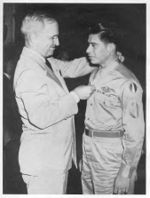 On August 23, 1945, the President of the United States, Harry S.
Truman presented Staff Sergeant Macario Garcia with the Medal of Honor
at a ceremony in the White House.
On August 23, 1945, the President of the United States, Harry S.
Truman presented Staff Sergeant Macario Garcia with the Medal of Honor
at a ceremony in the White House.
President Truman bestows
the Medal of Honor on Garcia
Medal of Honor citation:
Marcario Garcia
Rank and organization: Staff Sergeant, US Army B Company 1st
Battalion 22nd Infantry, 4th Infantry Division.
Place and date: Near Grosshau, Germany---27 November 1944.
Entered service at: Sugarland, Texas
Born: 20 January 1920, Villa de Castano, Mexico
G.O. # 74 1 September 1945.
Citation:
:"Staff Sergeant Marcario Garcia, Company B, 22nd Infantry, in
action involving actual conflict with the enemy in the vicinity of
Grosshau, Germany, 27 November 1944. While an acting squad leader, he
single-handedly assaulted two enemy machine gun emplacements.
Attacking prepared positions on a wooded hill, which could be
approached only through meager cover. His company was pinned down by
intense machine-gun fire and subjected to a concentrated artillery and
mortar barrage. Although painfully wounded, he refused to be evacuated
and on his own initiative crawled forward alone until he reached a
position near an enemy emplacement. Hurling grenades, he boldly
assaulted the position, destroyed the gun, and with his rifle killed
three of the enemy who attempted to escape. When he rejoined his
company, a second machine-gun opened fire and again the intrepid
soldier went forward, utterly disregarding his own safety. He stormed
the position and destroyed the gun, killed three more Germans, and
captured four prisoners. He fought on with his unit until the
objective was taken and only then did he permit himself to be removed
for medical care. S/Sgt. (then Pvt.) Garcia's conspicuous heroism, his
inspiring, courageous conduct, and his complete disregard for his
personal safety wiped out two enemy emplacements and enabled his
company to advance and secure its objective."
Namesakes:
Staff Sergeant Marcario Garcia died on December 24, 1972 and was
buried with full military honors in the Houston National Cemetery in
Houston, Texas. The local government of Houston has honored his memory
by naming a middle school after him and on June 27, 1981 the city
renamed part of 69th Street- S/SGT Macario Garcia Drive.
Awards and recognitions:
Among Staff Sergeant Marcario Garcia's decorations and medals were
the following:
Medal of Honor
Purple Heart Medal
European-African-Middle Eastern Campaign Medal
American Campaign Medal
World War II Victory Medal
Further reading:
The following books make references to Marcario Garcia's
exploits:[4]
Medal of Honor: Historical Facts And Figures, page 167, by Ron
Owens
The Battle of Hurtgen Forest (West Wall Series) (West Wall), page
133, by Charles Whiting
The Quest for Tejano Identity in San Antonio, Texas, 1913-2000
(Latino Communities: Emerging Voices--Political, Social, Cultural and
Legal Issues), page 56, by Jr., Richard Buitron and Richard Buitron
ÁRaza Sí! ÁGuerra No!: Chicano Protest and Patriotism during the
Viet Nam War Era, page 36, by Lorena Oropeza
Moon Handbooks Charleston and Savannah (Moon Handbooks), page 115,
by Mike Sigalas
|
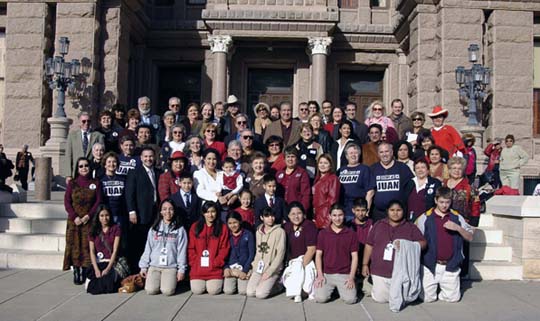

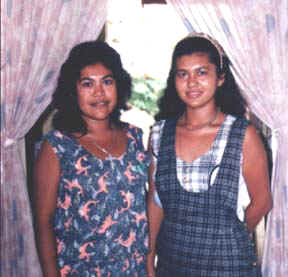 The Mongoy family is descended from Filipinos brought in slavery to
Acapulco during Spanish colonial years. Now mixed with Indigenous,
Spanish and African ancestors, the family is sizable in Coyuca and is
honored on web sites devoted to Filipinio and African heritages in
Mexico.
The Mongoy family is descended from Filipinos brought in slavery to
Acapulco during Spanish colonial years. Now mixed with Indigenous,
Spanish and African ancestors, the family is sizable in Coyuca and is
honored on web sites devoted to Filipinio and African heritages in
Mexico.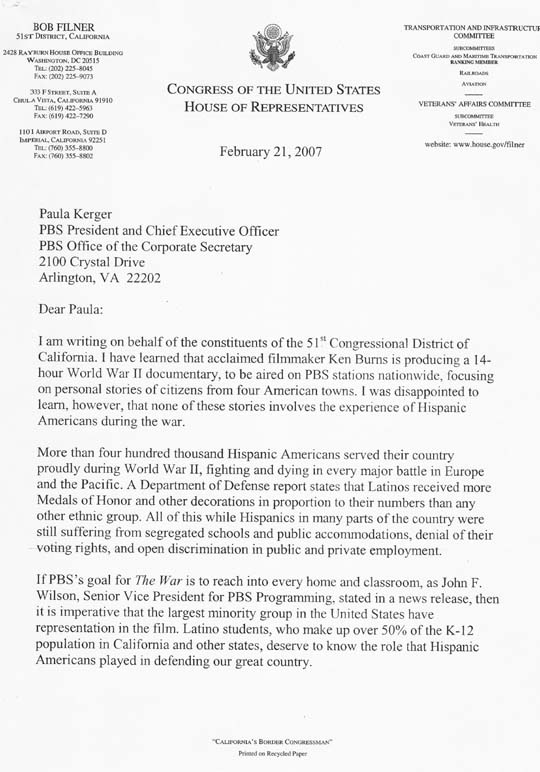
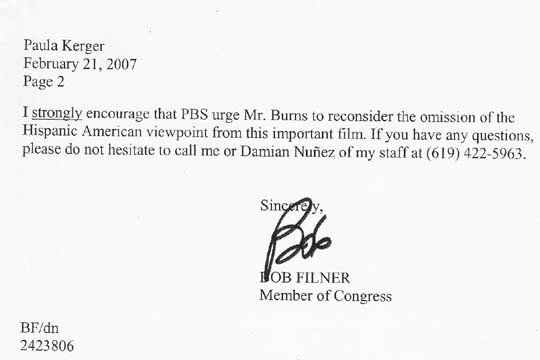

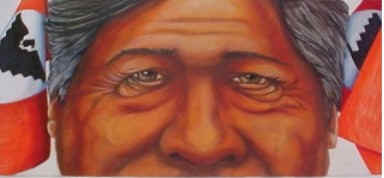
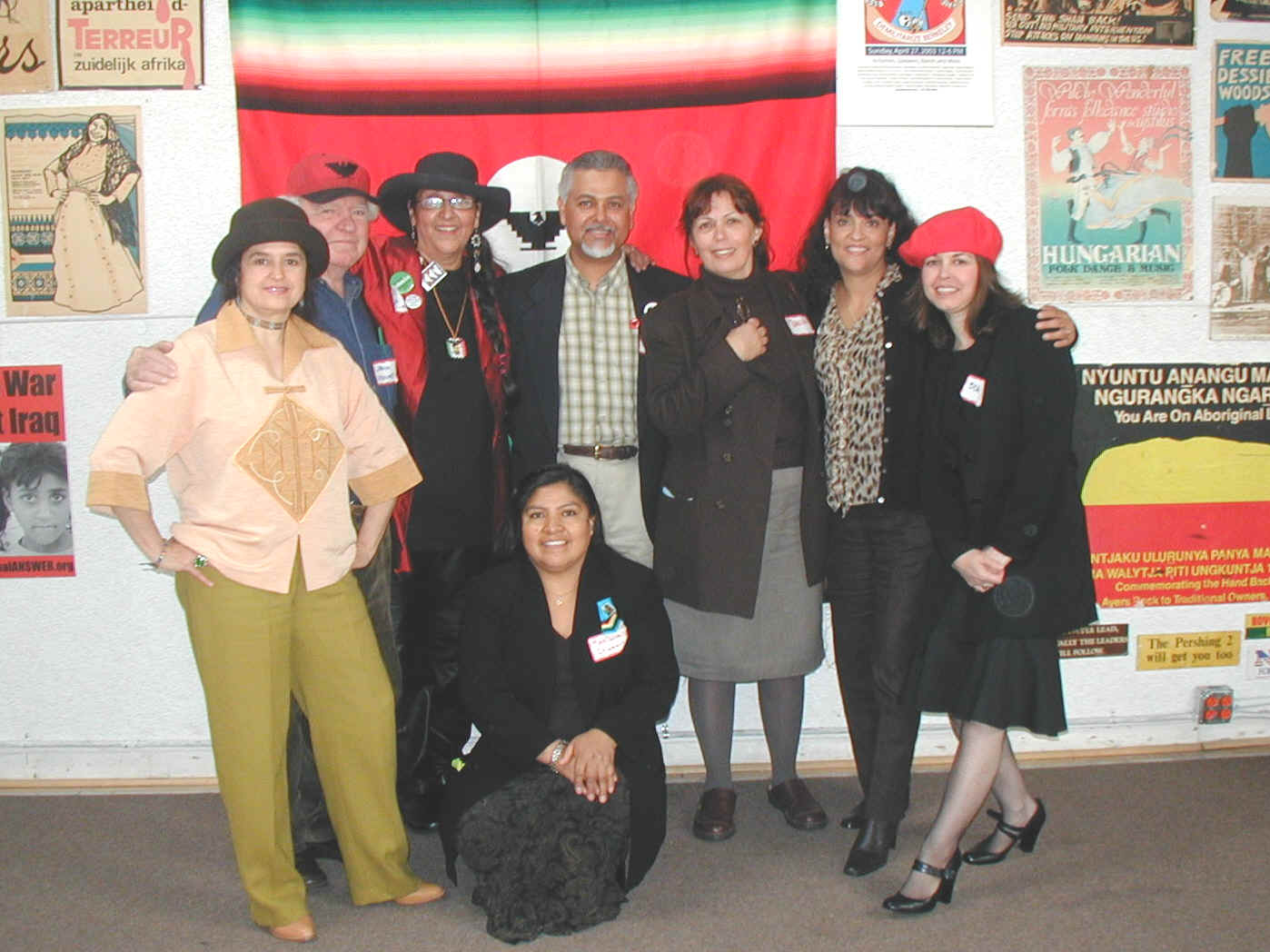
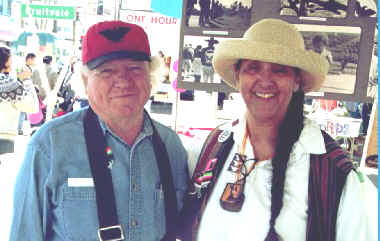
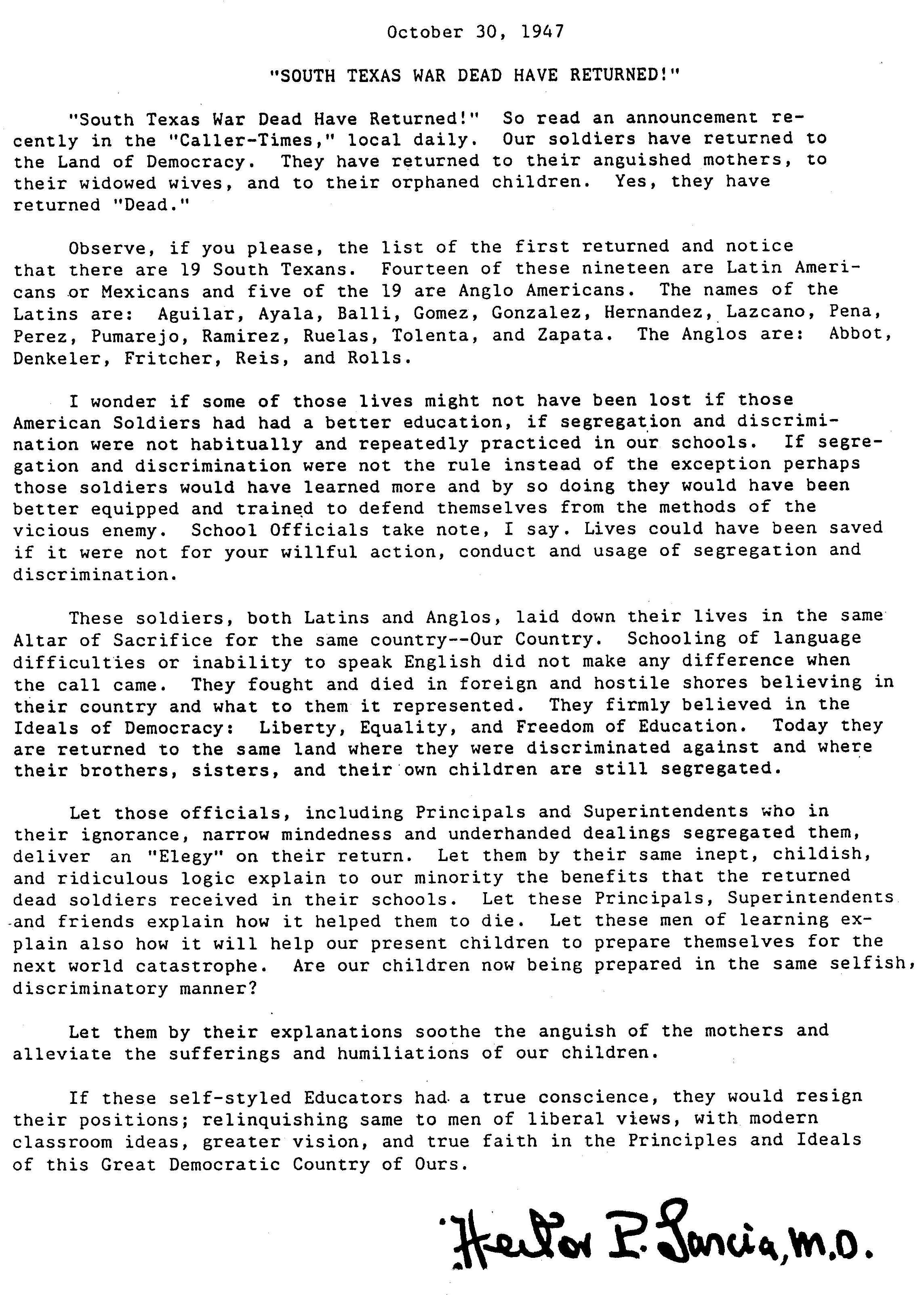
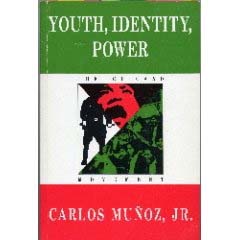
 DRUG LORD
DRUG LORD 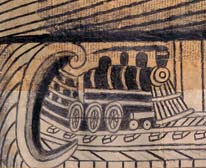 Extract:
Art Review of Martin
Ramirez (1895-1963)
Extract:
Art Review of Martin
Ramirez (1895-1963) The American Folk
Art Museum’s transporting exhibition of the scroll-like drawings of
the Mexican artist Martín Ramírez. Ramírez, who created the roughly 300 drawings that make up his known work between 1948 and 1963 while confined to a mental hospital in Northern California, is simply one of the greatest artists of the 20th century. He belongs to the group of accessible, irresistible genius draftsmen that includes Paul
Klee, Saul Steinberg and Charles Schulz. Well selected and beautifully installed by Brooke Davis Anderson, a curator at the folk art museum, this show of 97 drawings, some mural-size, is the first museum exhibition of Ramírez’s work in New York and one of the best shows of the season.
The American Folk
Art Museum’s transporting exhibition of the scroll-like drawings of
the Mexican artist Martín Ramírez. Ramírez, who created the roughly 300 drawings that make up his known work between 1948 and 1963 while confined to a mental hospital in Northern California, is simply one of the greatest artists of the 20th century. He belongs to the group of accessible, irresistible genius draftsmen that includes Paul
Klee, Saul Steinberg and Charles Schulz. Well selected and beautifully installed by Brooke Davis Anderson, a curator at the folk art museum, this show of 97 drawings, some mural-size, is the first museum exhibition of Ramírez’s work in New York and one of the best shows of the season.
 He might orchestrate the curved lines into stepped, hivelike hills punctuated by dark tunnels where ornate trains and buglike cars or buses chug in or out along extravagantly banked roadways or railroad beds defined by further lines. The straight lines might form fluted, beautifully shaded proscenium stages that bring to mind old-time movie screens. Here we usually find the caballero aiming his pistol in one direction while pointing his reined-in steed in another, as if ready to wheel and dash to safety.
He might orchestrate the curved lines into stepped, hivelike hills punctuated by dark tunnels where ornate trains and buglike cars or buses chug in or out along extravagantly banked roadways or railroad beds defined by further lines. The straight lines might form fluted, beautifully shaded proscenium stages that bring to mind old-time movie screens. Here we usually find the caballero aiming his pistol in one direction while pointing his reined-in steed in another, as if ready to wheel and dash to safety.  At DeWitt in 1948, a psychologist and artist of Finnish descent named Tarmo Pasto discovered Ramírez and began to save the large drawings he made on available bits of paper glued together with a paste made of bread or potatoes and saliva. In the first gallery at the Folk Art Museum, note the handle of a brown-paper shopping bag at the top edge of a tall, narrow landscape dominated by winding stairs interspersed with white churches and roadside chapels.
At DeWitt in 1948, a psychologist and artist of Finnish descent named Tarmo Pasto discovered Ramírez and began to save the large drawings he made on available bits of paper glued together with a paste made of bread or potatoes and saliva. In the first gallery at the Folk Art Museum, note the handle of a brown-paper shopping bag at the top edge of a tall, narrow landscape dominated by winding stairs interspersed with white churches and roadside chapels.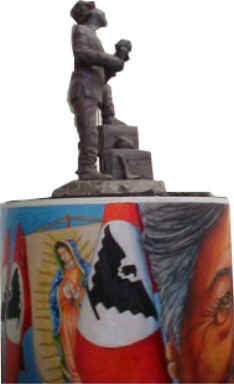



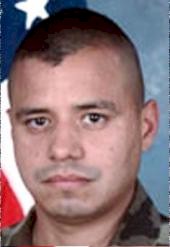 Austin post office
renamed for fallen soldier
Austin post office
renamed for fallen soldier 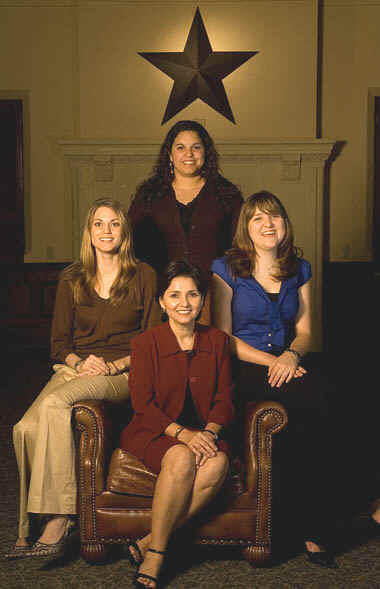


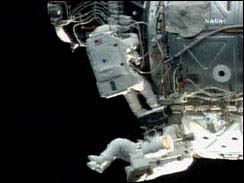
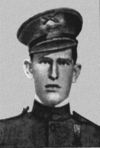
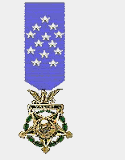
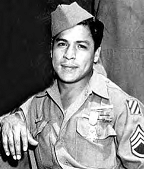

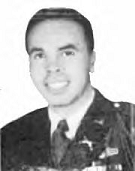
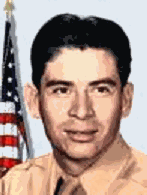
 On August 23, 1945, the President of the United States, Harry S.
Truman presented Staff Sergeant Macario Garcia with the Medal of Honor
at a ceremony in the White House.
On August 23, 1945, the President of the United States, Harry S.
Truman presented Staff Sergeant Macario Garcia with the Medal of Honor
at a ceremony in the White House.
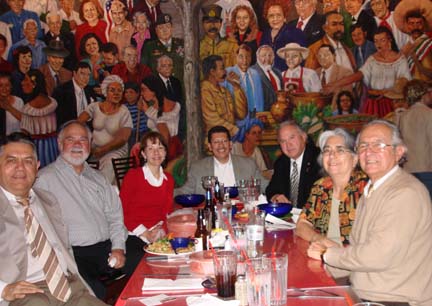
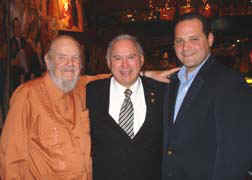
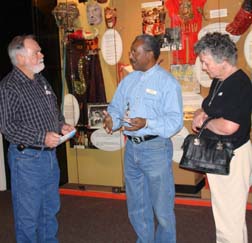
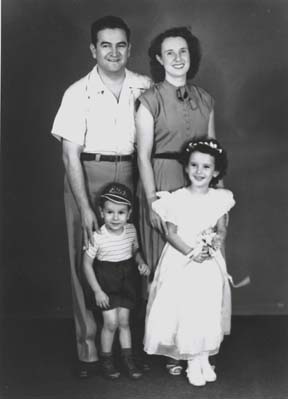
 Sonny
Saavedra is no longer with us. He passed into spirit about 2 years
ago. I will always remember Sonny being a part of our lives. May God
bless him and his family for their contribution and support. Willie
Davila hid my father in the trunk of his car from the Texas Rangers
and saved his life. Willie is the reason that I am not an orphan and
that the civil rights movement for Hispanics was born. My father was
deeply devoted to La Virgen de Guadalupe. On a spiritual level, I know
that "La Virgen" was protecting my Papa from harm as well so
he could accomplish his work.
Sonny
Saavedra is no longer with us. He passed into spirit about 2 years
ago. I will always remember Sonny being a part of our lives. May God
bless him and his family for their contribution and support. Willie
Davila hid my father in the trunk of his car from the Texas Rangers
and saved his life. Willie is the reason that I am not an orphan and
that the civil rights movement for Hispanics was born. My father was
deeply devoted to La Virgen de Guadalupe. On a spiritual level, I know
that "La Virgen" was protecting my Papa from harm as well so
he could accomplish his work.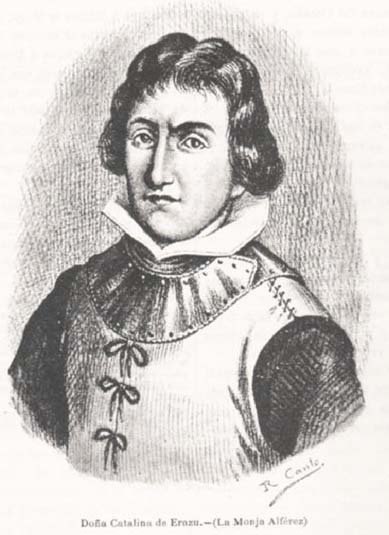
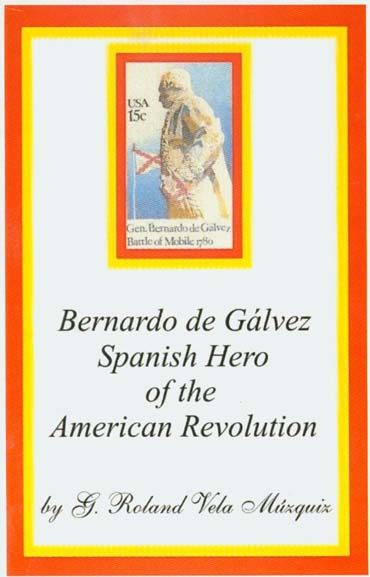
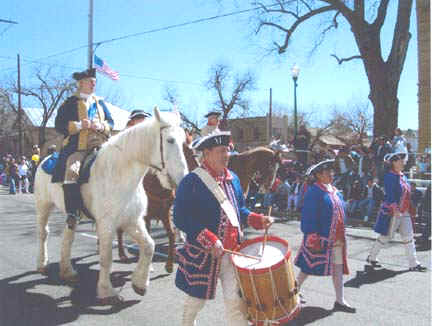
 "Obviously, there is a resistance to include the Spanish
contribution to America," said Jack Cowan, president of the Texas
Connection To America's Revolution Association. "It is kind of
human nature, but it is something to overcome. History has not
included the contribution of Spain in Texas or Louisiana, and it
played a gigantic part in American history. Our goal is to educate and
make these people known."
"Obviously, there is a resistance to include the Spanish
contribution to America," said Jack Cowan, president of the Texas
Connection To America's Revolution Association. "It is kind of
human nature, but it is something to overcome. History has not
included the contribution of Spain in Texas or Louisiana, and it
played a gigantic part in American history. Our goal is to educate and
make these people known."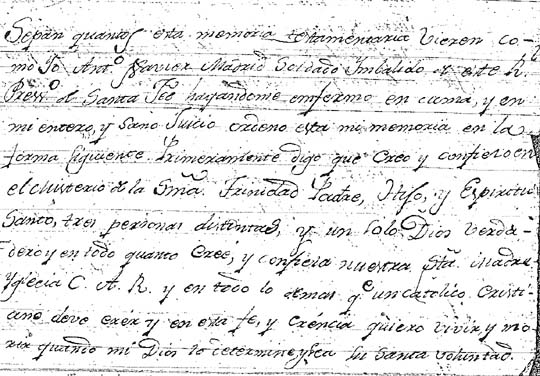
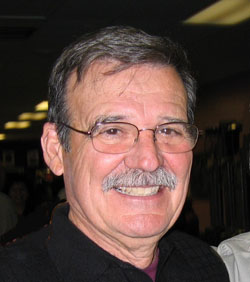 My interest in genealogy began more than 30 years ago when I discovered that José Felipe de la Peña had been "Alcalde" mayor of Revilla in 1824. My grandfather was, José Felipe, but the "Alcalde" was my grandfather's grandfather. Then, I was given a copy of the Mexican land grant, great-grandfather José Felipe received in 1835. The 22,000 acre land grant located in Zapata County (Texas) was known as "las Ánimas."
My interest in genealogy began more than 30 years ago when I discovered that José Felipe de la Peña had been "Alcalde" mayor of Revilla in 1824. My grandfather was, José Felipe, but the "Alcalde" was my grandfather's grandfather. Then, I was given a copy of the Mexican land grant, great-grandfather José Felipe received in 1835. The 22,000 acre land grant located in Zapata County (Texas) was known as "las Ánimas."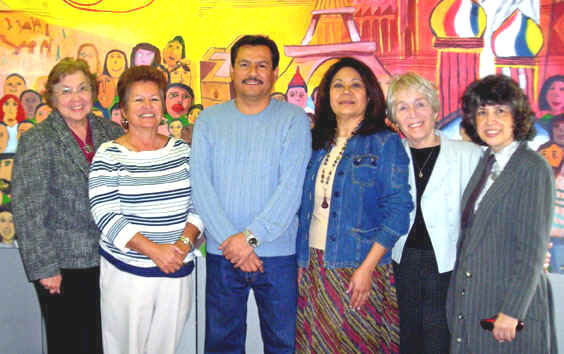

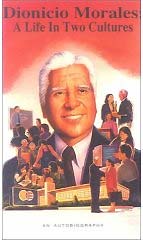
 In
recognition of his many achievements, Don Dionicio has been accorded
numerous well deserved accolades: The County of Los Angeles renamed
Belvedere Park in East Los Angeles after him; he was accorded honorary
citizen status by the two Mexican states that host the Tarascan
cultural heritage, Guanajuato and Michoacan; he was awarded the Life
Achievement award by Hispanic Business,
In
recognition of his many achievements, Don Dionicio has been accorded
numerous well deserved accolades: The County of Los Angeles renamed
Belvedere Park in East Los Angeles after him; he was accorded honorary
citizen status by the two Mexican states that host the Tarascan
cultural heritage, Guanajuato and Michoacan; he was awarded the Life
Achievement award by Hispanic Business, 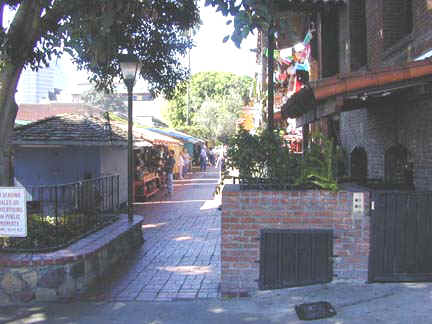 On a beautiful sunny day,
Sept 4, 1781, the 44 pobladores
(settlers) from 11 families, and two Padres set out from Mission San
Gabriel and accompanied by an escort of soldiers, walked nine miles down
the river to found El Pueblo de Nuestra Senora la Reina de Los Angeles
del Rio Porciuncula. Some of the pobladores walked, others rode on
horses or mules through
On a beautiful sunny day,
Sept 4, 1781, the 44 pobladores
(settlers) from 11 families, and two Padres set out from Mission San
Gabriel and accompanied by an escort of soldiers, walked nine miles down
the river to found El Pueblo de Nuestra Senora la Reina de Los Angeles
del Rio Porciuncula. Some of the pobladores walked, others rode on
horses or mules through As part of their five-year contract, the settlers were granted land
for their houses and for their farms, seeds for planting, plus livestock
such as horses, cattle, cows, sheep, goats, oxen, mules, as well as
implements with which to work the land. Within a years’ time, the
Pueblo was crudely completed. This was the second pueblo to be
established in Alta California--the first pueblo established was El
Pueblo de San Jose de Guadalupe. Today, we honor and salute the eleven
families from Sonora and Sinaloa, Nueva Espana (now Mexico), who first
started up the great metropolis of the City of Los Angeles, California.
As part of their five-year contract, the settlers were granted land
for their houses and for their farms, seeds for planting, plus livestock
such as horses, cattle, cows, sheep, goats, oxen, mules, as well as
implements with which to work the land. Within a years’ time, the
Pueblo was crudely completed. This was the second pueblo to be
established in Alta California--the first pueblo established was El
Pueblo de San Jose de Guadalupe. Today, we honor and salute the eleven
families from Sonora and Sinaloa, Nueva Espana (now Mexico), who first
started up the great metropolis of the City of Los Angeles, California.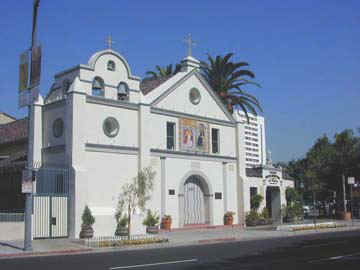 La Iglesia de Nuestra Senora la Reina de Los Angeles --Plaza Church -
California State Historic Landmark No. 144. – The Church of Our Lady
the Queen of the Angeles was dedicated on December 8, 1822, during
California’s Mexican era, a year after Mexico’s independence from
Spain was won. The treaty announcing Mexico’s independence from Spain
is called the Treaty of Cordova, which was signed in the town of Cordova
on August 24, 1821, by Don Juan O’Donnoju for Spain, and Don Augustine
de Iturbide for Mexico. The Los Angeles Plaza is Landmark No. 156.
Today, the outline of the pueblo is preserved in an historic monument
familiarly called Olvera Street.
La Iglesia de Nuestra Senora la Reina de Los Angeles --Plaza Church -
California State Historic Landmark No. 144. – The Church of Our Lady
the Queen of the Angeles was dedicated on December 8, 1822, during
California’s Mexican era, a year after Mexico’s independence from
Spain was won. The treaty announcing Mexico’s independence from Spain
is called the Treaty of Cordova, which was signed in the town of Cordova
on August 24, 1821, by Don Juan O’Donnoju for Spain, and Don Augustine
de Iturbide for Mexico. The Los Angeles Plaza is Landmark No. 156.
Today, the outline of the pueblo is preserved in an historic monument
familiarly called Olvera Street.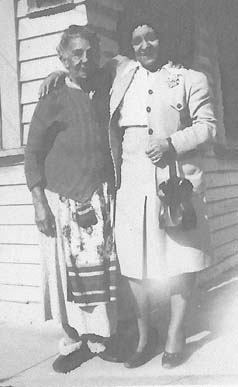 As time goes on, Benedicta Briones and Pablo Vasquez and their
children return to live in Santa Barbara. Soledad Vasquez married
Mariano Garcia at Our Lady of Sorrows Church in Santa Barbara in the
Year 1852. Soledad Vasquez and Mariano Garcia were blessed with a large
family. Their fourth child, a daughter named Tomasa Garcia, is my great
grandmother.
As time goes on, Benedicta Briones and Pablo Vasquez and their
children return to live in Santa Barbara. Soledad Vasquez married
Mariano Garcia at Our Lady of Sorrows Church in Santa Barbara in the
Year 1852. Soledad Vasquez and Mariano Garcia were blessed with a large
family. Their fourth child, a daughter named Tomasa Garcia, is my great
grandmother.  Mosaic
Los Angeles
Mosaic
Los Angeles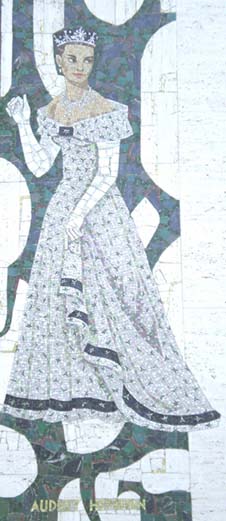
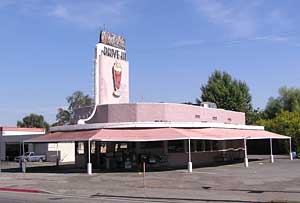 Mearle's Drive-In, which closed in August, has been named a local landmark. (Rick
Mangini)
Mearle's Drive-In, which closed in August, has been named a local landmark. (Rick
Mangini) 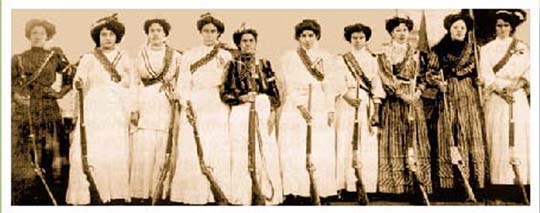


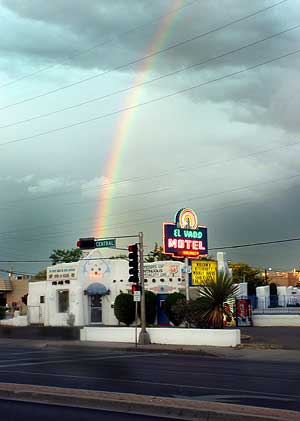


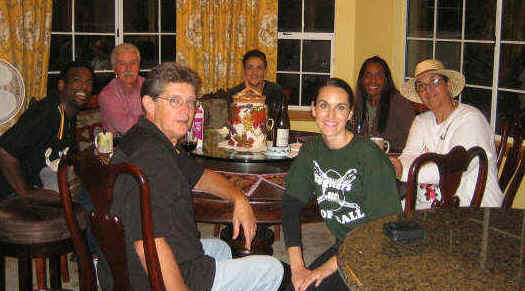
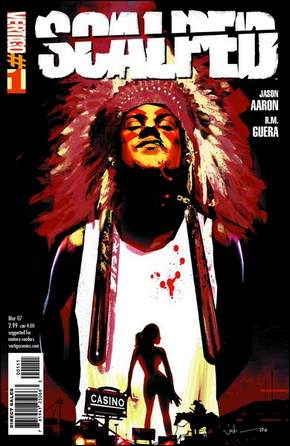 Extract:
'Scalped' reviewed by
Extract:
'Scalped' reviewed by 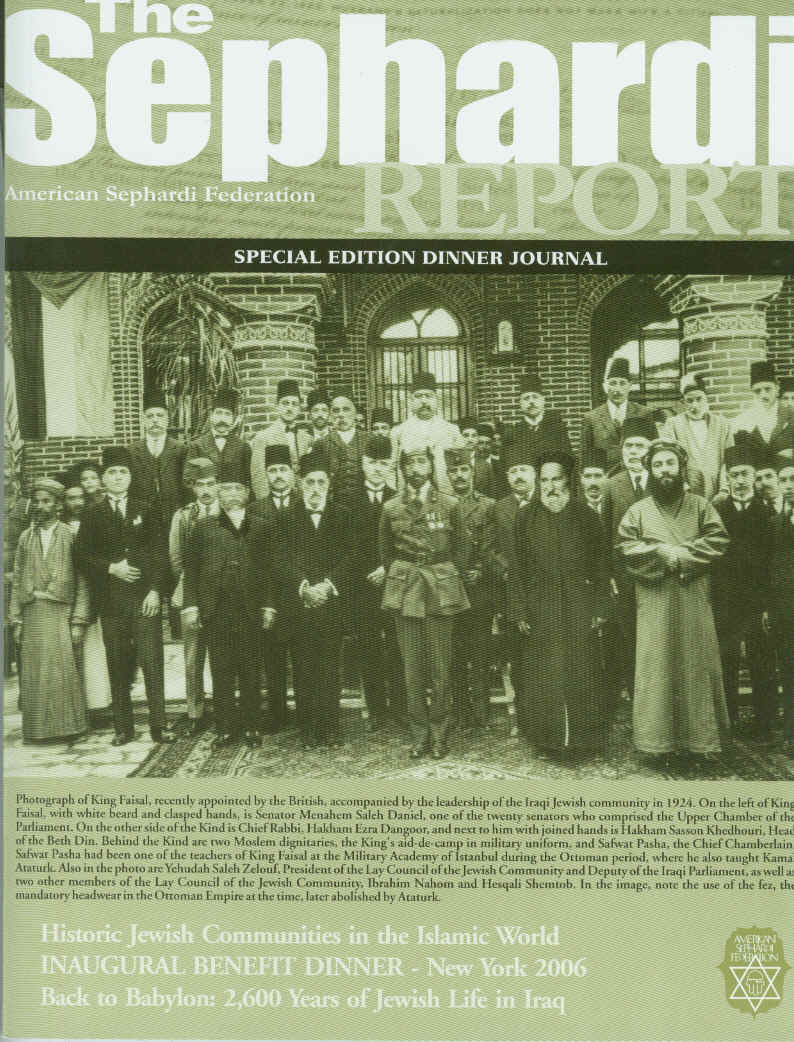
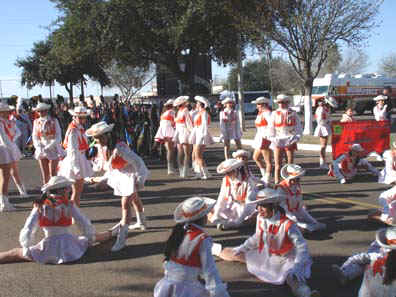
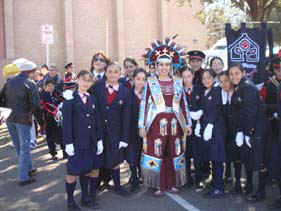
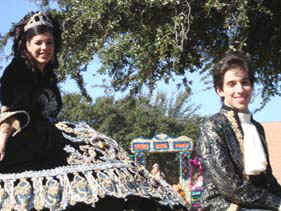
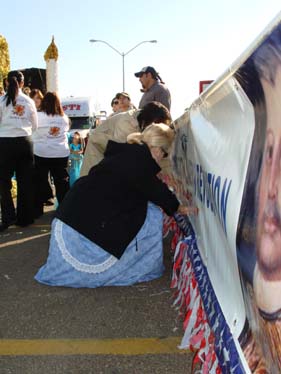
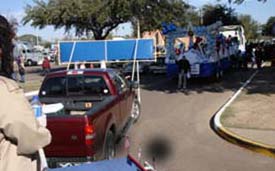
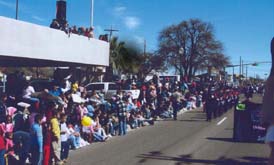
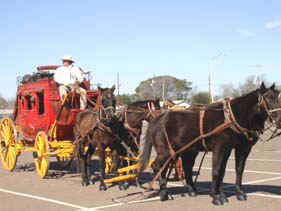

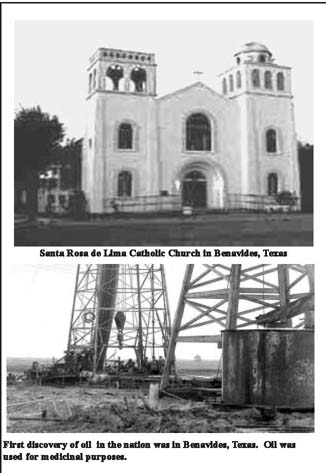
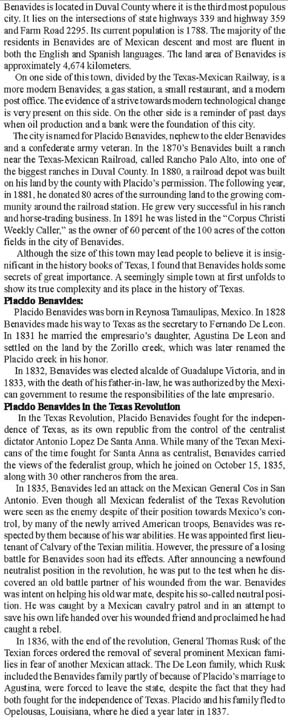
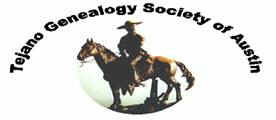

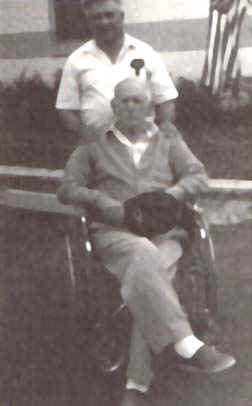
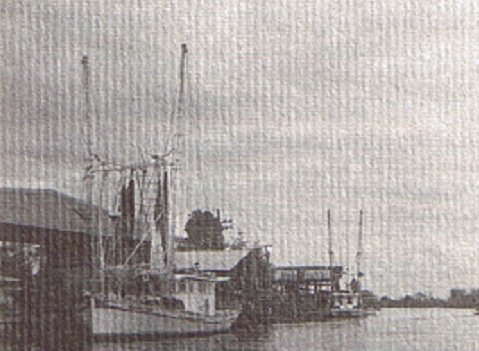 Irvan
nació el 19 de diciembre de 1922 en la llamada
Irvan
nació el 19 de diciembre de 1922 en la llamada 